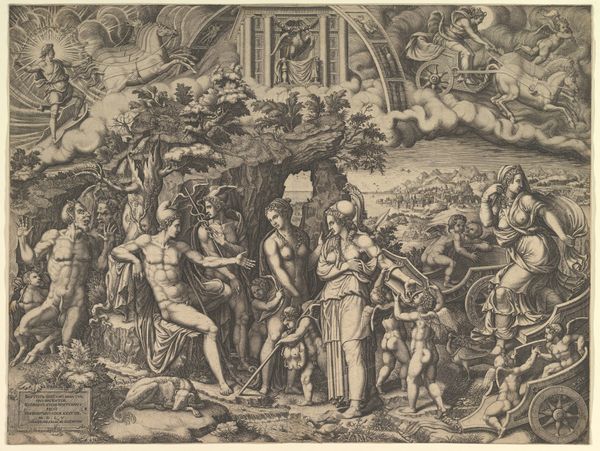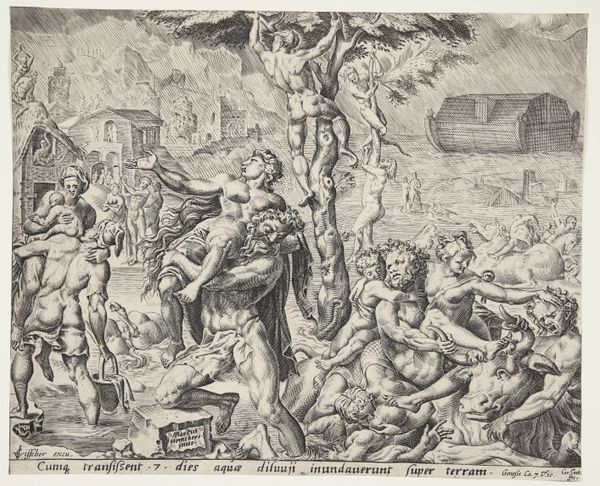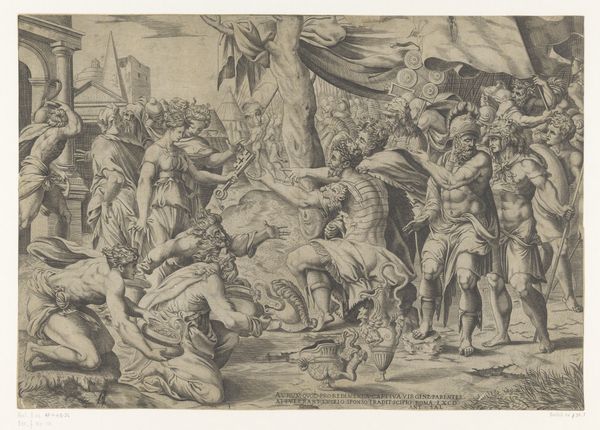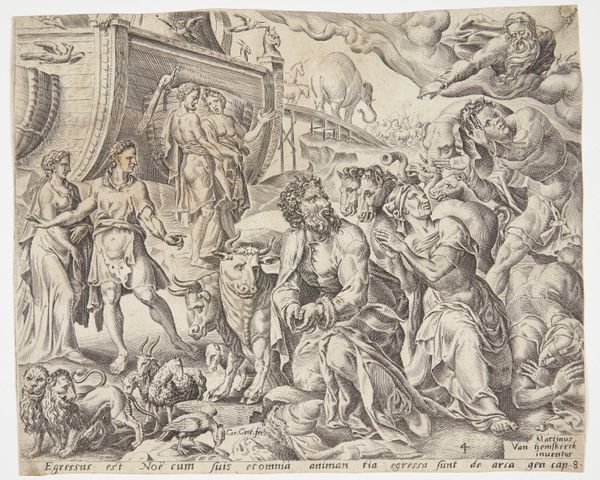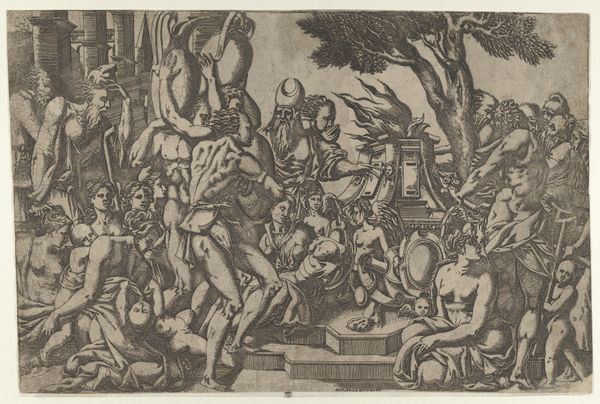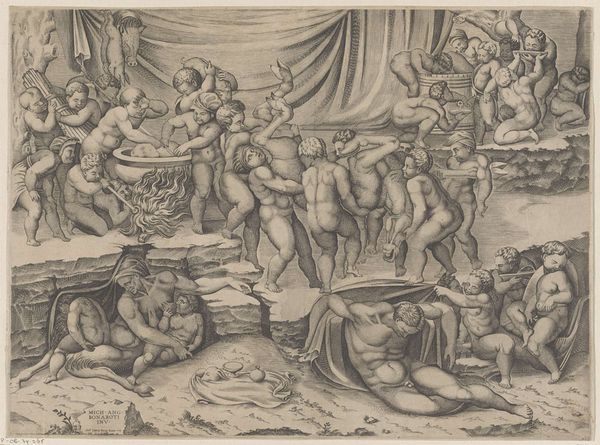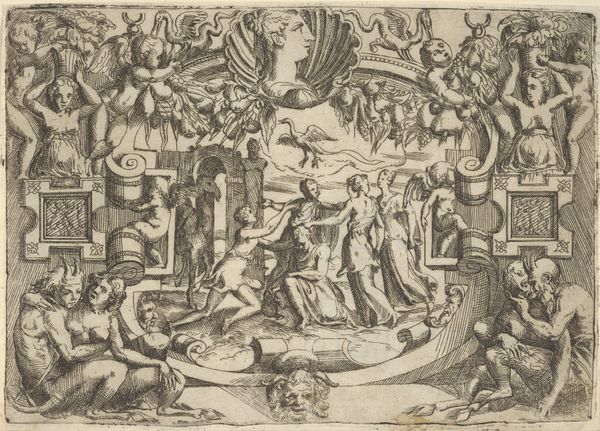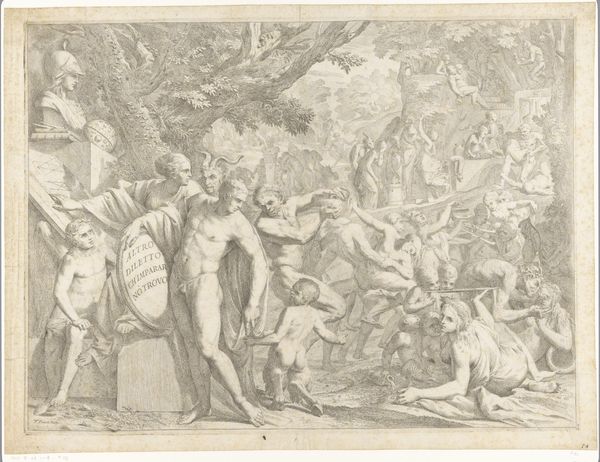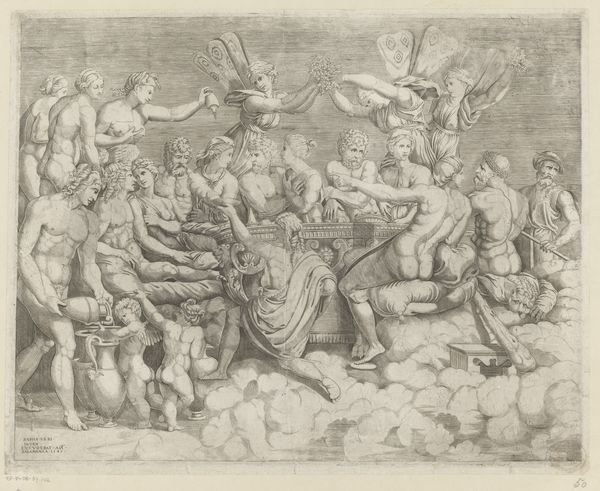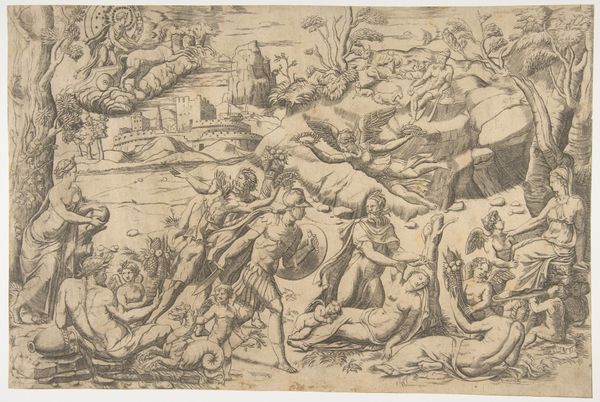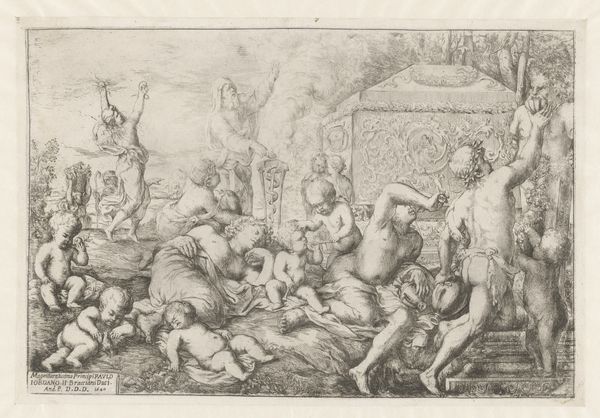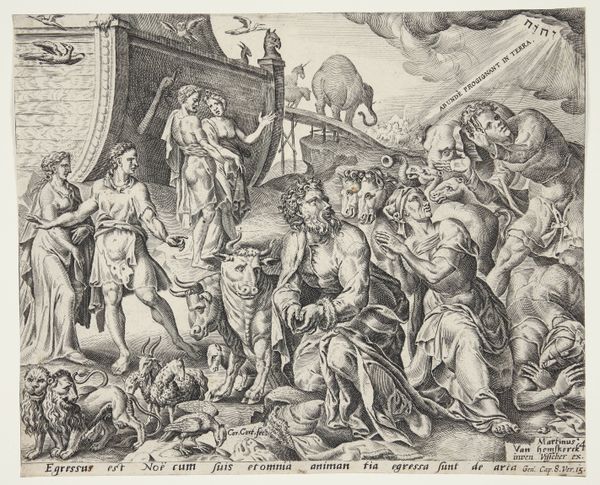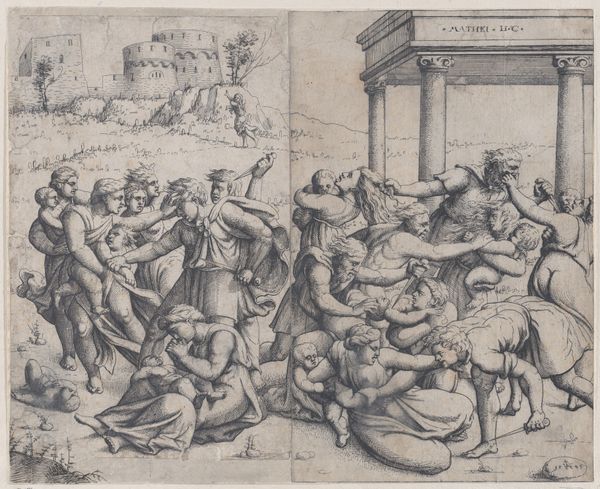
print, intaglio, engraving
#
ink drawing
#
pen drawing
# print
#
intaglio
#
mannerism
#
figuration
#
11_renaissance
#
pen work
#
history-painting
#
nude
#
engraving
Dimensions: height 286 mm, width 410 mm
Copyright: Rijks Museum: Open Domain
This engraving by Enea Vico, made around the mid-16th century, bursts with the revelry of a Bacchanaal, brimming with plump putti. These winged infants, often associated with Cupid and divine love, take on a more earthly role here, frolicking amidst the drunken chaos of Bacchus, the god of wine. Observe how these putti engage in playful acts of inebriation and merriment, echoing the Dionysian spirit of ecstasy and liberation. Such imagery can be traced back to classical antiquity, where similar scenes adorned Roman sarcophagi, celebrating life, death, and rebirth. Yet, the putto motif, initially pagan, resurfaces during the Renaissance, now imbued with Christian connotations, representing cherubic angels. This blending of pagan and Christian symbols reveals the enduring power of images to transcend cultural boundaries. It highlights how collective memory and subconscious processes shape the evolution and interpretation of such motifs, allowing them to resurface, evolve, and take on new meanings across time. Consider the psychological impact of these images, engaging viewers on a deep, subconscious level.
Comments
No comments
Be the first to comment and join the conversation on the ultimate creative platform.
